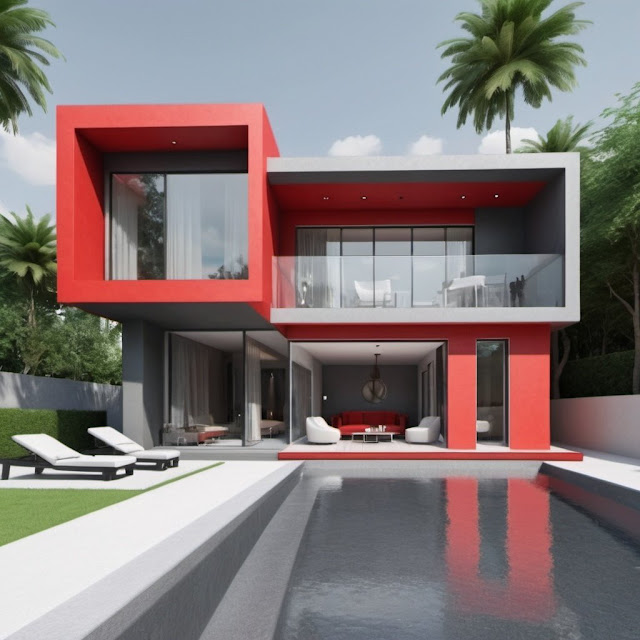Introduction
In the dynamic landscape of architecture, the concept of flexibility has emerged as a guiding principle, shaping the design of spaces that can adapt to changing needs, functions, and user preferences. Flexible spaces represent a departure from rigid, fixed layouts, offering versatility, adaptability, and multipurpose functionality. From commercial offices to educational facilities and residential dwellings, the incorporation of flexible spaces is revolutionizing architectural design, fostering creativity, collaboration, and innovation. This article explores the evolution of flexible spaces in architecture, their design principles, benefits, and their transformative impact on the built environment.
Understanding Flexible Spaces
Flexible spaces are characterized by their ability to accommodate a variety of activities, configurations, and uses, thereby enabling seamless adaptation to evolving needs and circumstances. These spaces are designed to be dynamic and responsive, allowing for easy reconfiguration, expansion, or contraction as required. Key features of flexible spaces include movable partitions, modular furniture, adaptable infrastructure, and integrated technology systems that support diverse functions and user interactions.
Design Principles of Flexible Spaces
1. Modularity and Versatility: Flexible spaces are modular in nature, comprising components that can be easily assembled, disassembled, or rearranged to accommodate different activities and spatial configurations. Modular furniture, movable partitions, and demountable walls facilitate quick reconfiguration, promoting versatility and adaptability.
2. Spatial Fluidity: Flexible spaces prioritize spatial fluidity, allowing for seamless transitions between open-plan layouts and subdivided zones as needed. Design strategies such as sliding doors, folding walls, and retractable partitions enable users to customize the spatial layout according to specific requirements while maintaining visual connectivity and continuity.
3. Multifunctionality: Flexible spaces embrace multifunctionality, serving multiple purposes and accommodating diverse activities within the same environment. Furniture with integrated storage, foldable tables, and adjustable seating configurations maximize space efficiency and facilitate smooth transitions between different functions.
4. Adaptive Technology: Integration of adaptive technology systems enhances the flexibility of spaces, enabling users to control environmental conditions, lighting, acoustics, and multimedia settings to suit specific activities and user preferences. Smart sensors, programmable lighting controls, and wireless connectivity enable seamless interaction with the built environment, enhancing user experience and productivity.
Benefits of Flexible Spaces
1. Adaptability: Flexible spaces offer adaptability and responsiveness to changing needs, accommodating evolving functions, user preferences, and technological advancements over time.
2. Efficiency: The versatility of flexible spaces optimizes space utilization, enabling efficient use of floor area and resources while minimizing wasted space and redundancy.
3. Collaboration and Innovation: Flexible spaces foster collaboration, creativity, and innovation by providing dynamic environments that promote interaction, communication, and idea exchange among users.
4. Well-being and User Experience: The adaptability and customization options of flexible spaces contribute to user well-being and satisfaction, allowing individuals to tailor their environments to suit their comfort, productivity, and personal preferences.
5. Cost-Effectiveness: Flexible spaces offer cost-effective solutions for organizations and institutions by minimizing the need for costly renovations or relocations in response to changing needs and functional requirements.
Impact on the Built Environment
The incorporation of flexible spaces is transforming the built environment across various sectors, including:
• Commercial Offices: Flexible workspaces promote agile working practices, collaboration, and employee well-being, fostering a dynamic and adaptive work culture in modern organizations.
• Educational Facilities: Flexible learning environments support diverse teaching methodologies, collaborative learning, and student engagement, accommodating evolving pedagogical approaches and educational technologies.
• Residential Dwellings: Flexible living spaces cater to changing lifestyle needs, family dynamics, and multi-generational living arrangements, offering residents the flexibility to customize their living environments according to their preferences and evolving needs.
Conclusion
Flexible spaces represent a paradigm shift in architectural design, offering adaptable, responsive, and user-centric environments that foster creativity, collaboration, and well-being. As the demands of the built environment continue to evolve in response to technological advancements, demographic shifts, and changing societal needs, the integration of flexible spaces will play an increasingly significant role in shaping the future of architecture. By embracing flexibility as a guiding principle, architects can create environments that not only respond to the needs of today but also anticipate the challenges and opportunities of tomorrow.























































